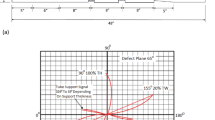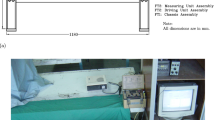Abstract
An energy based fatigue life prediction framework has been developed for calculation of remaining fatigue life of in service gas turbine materials. The purpose of the life prediction framework is to account aging effect caused by cyclic loadings on fatigue strength of gas turbine engines structural components which are usually designed for very long life. Previous studies indicate the total strain energy dissipated during a monotonic fracture process and a cyclic process is a material property that can be determined by measuring the area underneath the monotonic true stress-strain curve and the sum of the area within each hysteresis loop in the cyclic process, respectively. The energy-based fatigue life prediction framework consists of the following entities: (1) development of a testing procedure to achieve plastic energy dissipation per life cycle and (2) incorporation of an energy-based fatigue life calculation scheme to determine the remaining fatigue life of in-service gas turbine materials. The accuracy of the remaining fatigue life prediction method was verified by comparison between model approximation and experimental results of Aluminum 6061-T6. The comparison shows promising agreement, thus validating the capability of the framework to produce accurate fatigue life prediction.

















Similar content being viewed by others
Abbreviations
- β0 :
-
Material parameter
- β1 :
-
Material parameter
- C:
-
Scalar factor
- ε:
-
True strain for monotonic case
- ε0 :
-
Material parameter
- εa :
-
True cyclic strain
- εf :
-
True strain at the fracture
- εn :
-
True strain at the necking
- E:
-
Modulus of elasticity
- N:
-
Number of cycle to failure
- σ:
-
True stress
- σ0 :
-
Material parameter
- σa :
-
Alternating stress amplitude
- σc :
-
Material parameter
- σn :
-
True stress at the necking
- Wc :
-
Strain energy dissipated per cycle
- Wm :
-
Strain energy for monotonic case
References
Feltner CE, Morrow JD (1960) Micro plastic strain hysteresis energy as a criterion for fatigue facture, ASME, Paper No. 60-MET-2
Enomoto N (1955) On fatigue tests under progressive stress. Proc ASTM 55:903–917
Stowell E (1966) A study of the energy criterion for fatigue. Nucl Eng Des 3:32–40
Scott-Emuakpor O, Shen M-H H, George T, Cross C, Calcaterra J (2007) A new energy-based uniaxial fatigue life prediction method for gas turbine engine materials. ASME/IGTI Turbo Expo 2007, GT2007–27426
Scott-Emuakpor O, Shen M-HH, Cross C, Calcaterra J, George T (2007) Development of an improved high cycle fatigue criterion. ASME Journal of Engineering for Gas Turbines and Power, Vol. 129, January 2007, pp. 162–169
Scott-Emuakpor O, Shen M-HH, Cross C, Calcaterra J, George T (2005) A promising new energy-based fatigue life prediction framework. Proceedings of ASME/IGTI Turbo Expo, 2005; GT2005–68423.
Scott-Emuakpor O, Shen M-HH, George T, Cross C (2008) An energy-based uniaxial fatigue life prediction method for commonly used gas turbine engine materials. ASME Journal of Engineering Gas Turbines Power, November 2008, Volume 130, Issue 6, pp. 062504/ 1–15
Mayer H, Laird C (1994) An experimental study of inhomogeneous cyclic plastic deformation of 1045 steel under multiaxial cyclic loading. Mate Eng Sci A 194:137–145
Zhang J, Jiang Y (2005) Frequency effects on cyclic plastic strain of polycrystalline copper under variable loading. Int J Plast 21:2174–2190
Bathias C (1999) There is no infinite fatigue life in metallic materials. Fatigue Fract Eng Mater Struct 22:559–565
Bathias C, Paris PC (2010) Gigacycle fatigue of metallic aircraft components. Int J Fatigue 32(6):894–897
Scott-Emuakpor O, George T, Cross C, Shen M-HH (2010) Multi-axial fatigue-life prediction via a strain-energy method. AIAA J 48(1):63–72
American Society for Test and Materials (2004) ASTM E606-04e1: standard practice for strain-controlled fatigue test, book of standards, volume: 03.01
American Society for Test and Materials (2008) ASTM E8/E8M–08: standard test methods for tension testing of metallic materials, book of standards, volume: 03.01.
Aerospace Material Specifications (2008) SAE AMS 2772-E: heat treatment of aluminum alloy raw materials
American Society for Test and Materials (2003) ASTM B211-03-M: standard specification for aluminum and aluminum-alloy bar rod and wire, book of standards, volume: 02.02
Budzakoska E, Carr DG, Stathers PA, Li H, Harrison P, Hellier AK, Yeung WY (2007) Predicting the J integral fracture toughness of Al 6061 using the small punch test. Fatigue Fract Eng Mater Struct 30(9):796–807
Jogi BF, Brahmankar PK, Nanda VS, Prasad RC (2008) Some studies on fatigue crack growth rate of aluminum alloy 6061. J Mater Process Technol 201:380–384
Wang QY, Kawagoishi N, Chen Q (2004) Fatigue voids in structural Al-alloys under high-frequency cyclic loading. J Mater Sci 39:365–367
Wang QY, Kawagoishi N, Chen Q (2006) Fatigue and fracture behavior of structural Al-alloys up to very long life regimes. Int J Fatigue 28:1572–1576
Lanteigne J, Nguyen-Duy P (1983) Energy balance approach to low cycle fatigue. J Fract 23:RI47–RI49
Maquin F, Pierron F (2009) Heat dissipation measurements in low stress cyclic loading of metallic materials: from internal friction to micro-plasticity. Int J Mech Mater 41(8):928–942
Chang CS, Pimbley WT, Conway HD (1968) An analysis of metal fatigue based on hysteresis energy. J Exp Mech 8(3):133–137
Acknowledgments
The authors would like to thank the Air Force Research Laboratories (AFRL), specifically the Turbine Engine Fatigue Facility (TEFF) laboratory for their financial support, facility and equipment access, and encouragement for this research. The authors also would like to express their appreciation to Dr. Bulent H. Sencer of Idaho National Laboratory (INL) for helpful discussions.
Author information
Authors and Affiliations
Corresponding author
Rights and permissions
About this article
Cite this article
Ozaltun, H., Shen, MH.H., George, T. et al. An Energy Based Fatigue Life Prediction Framework for In-Service Structural Components. Exp Mech 51, 707–718 (2011). https://doi.org/10.1007/s11340-010-9365-z
Received:
Accepted:
Published:
Issue Date:
DOI: https://doi.org/10.1007/s11340-010-9365-z




